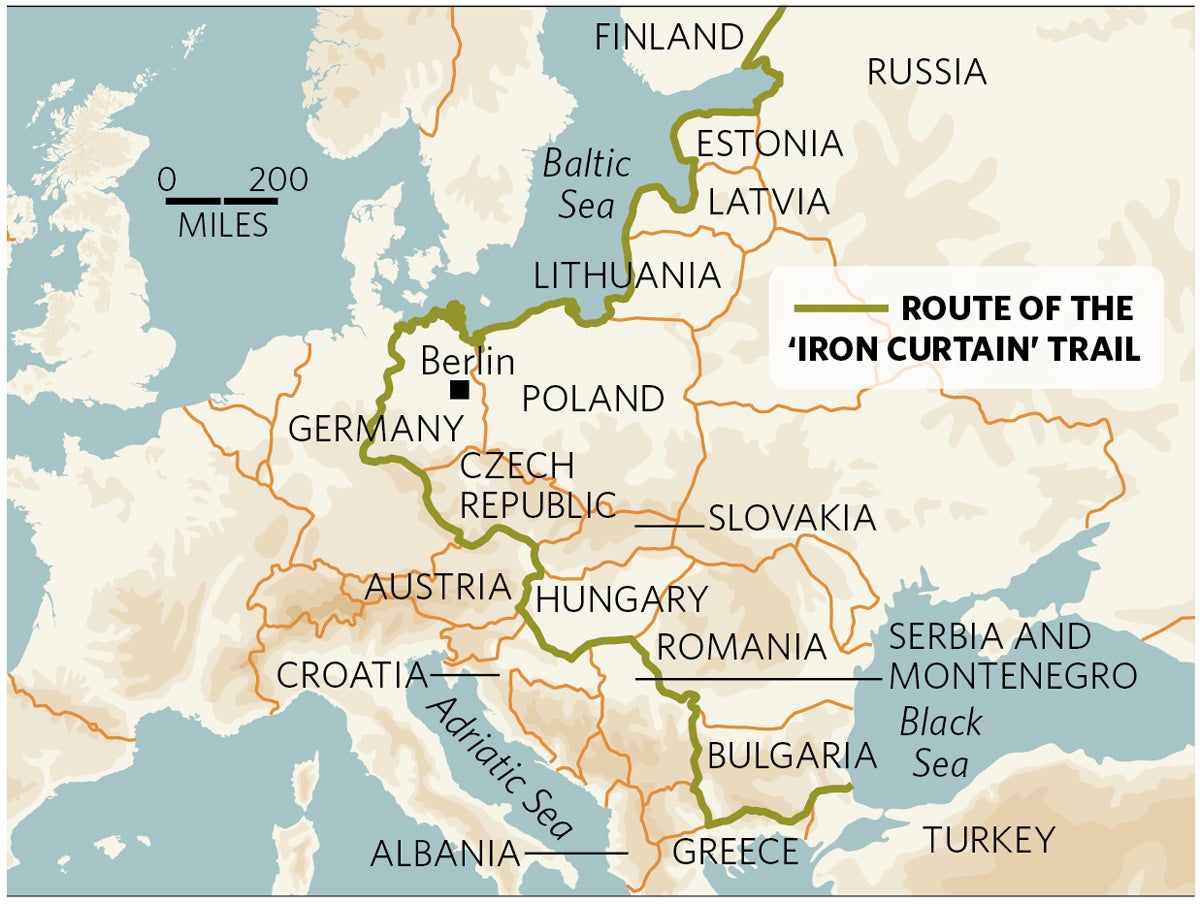Wildlife set for final victory along the Iron Curtain

The Iron Curtain was synonymous with death and oppression. It was festooned with mines, tripwires that triggered automatic guns, barbed wire, watchtowers, vicious dogs and guards who were paid bonuses to shoot human prey.
But this no-man's-land of old was also home to an astonishing variety of wildlife that flourished where the barrier separating communist east from capitalist west stood.If plans stay on course and the political will is backed with financial resources, the Iron Curtain trail could become one of the longest nature reserves on earth.
"Turning a death belt into a lifebelt is an incredible way to honour peace and unity," said Liana Geidezis, wildlife biologist and project manager for Bund, one of Germany's leading conservation groups. "The finished product will be the most important environmental symbol of the 21st century."
For 45 years, the Iron Curtain was a militarised zone from the northern tip of Scandinavia to southern Albania and Bulgaria, isolating communist-bloc nations from neutral and Nato-aligned countries.
In Germany, one segment bisected the nation, with a separate section, the Berlin Wall, dividing the capital. The frontier – 30 to 1,000 yards wide – was called the "inner German border" in the parlance of the politburo and was erected on farmland, marsh, woods, heath and fields.
The inner German border was 879 miles long and when the state which created it imploded in 1989 its other residents stayed put. Rare birds, insects, mammals and flowers thrived in a mosaic of parks, nature reserves and organic farms. The German segment is only one part of the project – the former barrier goes on for hundreds of miles through Hungary, parts of Austria and the Czech Republic – to forge the Iron Curtain into a permanent nature zone of extraordinary diversity and richness.
Species under pressure from urban sprawl found sanctuary here. Heron colonies, otters, the black stork and the lady's slipper orchid can be found. Rare moss grows on the concrete stumps that once housed automatic guns, bats nest in the remains of bunkers and watchtowers and rare egrets, warblers and other species delight nature lovers from around the world.
The former border is part of a European green belt 4,200 miles long. If the European Union gets its way, the entire interlinking nature reserves will stretch for 4,250 miles, starting at the Arctic Sea, running along Finland's border with Russia, through the Baltic states and Poland to Germany, then skirt Austria's border with the Czech Republic, Slovakia and Hungary before following the Danube to the Black Sea.
The project is partly inspired by the Boston Freedom Trail in the US, which commemorates the American War of Independence.
But little has been done to give the area legal protection. In Hungary there are reports of bulldozers moving into some areas and in Germany environmental groups want the federal government to hand over responsibility for the land to the 16 states which are responsible for the environment and nature.
A tentative deal has been reached recently but it must be ratified and the details have not been released.
Not all of the green belt is wilderness, but only one-third is designated as a nature conservation area. Bund is fighting to stop encroaching development wherever it can: for example, the expansion of a border crossing between Bavaria and the Czech Republic which they say is superfluous.
On Monday, the United Nations Conference on Biodiversity starts in Bonn. Bund's president, Hubert Weiger, told the German magazine Der Spiegel that Germany will find it "difficult to explain"why it is still wrangling over the details of protecting such a vital area.
Join our commenting forum
Join thought-provoking conversations, follow other Independent readers and see their replies
Comments
Bookmark popover
Removed from bookmarks